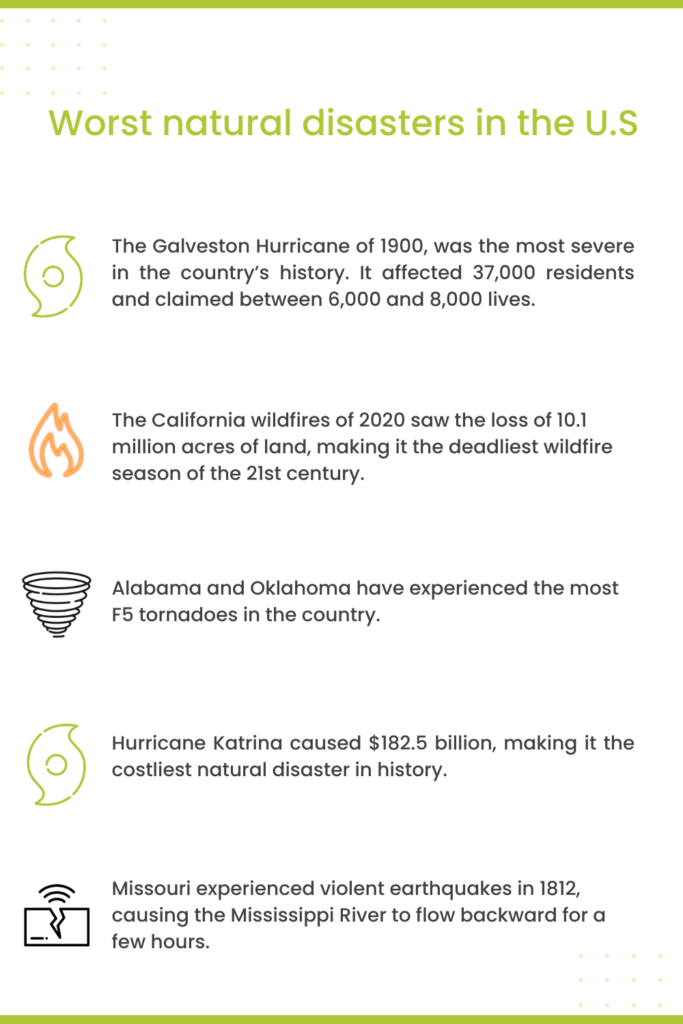In 2004, the Federal Emergency Management Agency (FEMA) launched the National Preparedness Month campaign to help raise awareness about the importance of being prepared to respond to a variety of emergencies and disasters – whether at home or in the community.
Whether it’s natural or man-made, ensuring you know how to keep yourself and others safe in an emergency is becoming increasingly important as climate change continues to create more severe weather events. There are many ways to reduce risks from emergencies, whether it be from leaks or spills, hazardous materials, severe weather or other dangers.
For senior care providers, having a written emergency preparedness plan is not only a good idea, it’s the law.

2022: A lasting legacy
The theme for this year focuses on protecting family and community for the future, with a special focus on including kids and people living with disabilities in the conversation and learning how to react before, during and after an emergency.
Keeping those most vulnerable safe and secure is of utmost importance; especially in situations beyond your control, it is essential to control what you can.
To help get people ready for all phases and types of emergencies, there are four simple steps to follow to ensure preparedness.
Step 1: Be informed
The first step to reacting responsibly to an emergency? Know it’s happening. While this may sound a bit silly – how could you not know an emergency was happening? – there are many great alert and public broadcast systems available to ensure you have the most up-to-date information from reliable sources – pushed right to your phone or device.
This ensures you are safe no matter where you are; home, school, work or on the road.
FEMA uses its Integrated Public Alert and Warning System (IPAWS) for localized, authenticated alerts, providing life-saving information to the public via radio, television and mobile phones.
Alerts can be created and sent by authorized federal, state and local agencies to wireless devices in geo-targeted areas. The alerts are also announced with a unique tone and vibration, ensuring those with disabilities are also made aware.
This service has been available since June 2012 and has:
- Sent more than 70,000 alerts to mobile phones
- Allowed over 1,700 government entities to send alerts
- Had more than 600 unique agencies have sent alerts
Step 2: Plan
The most vital part of being prepared is actually sitting down and writing a preparedness plan. A written plan ensures you can take time to think through various scenarios and possibilities and know who is responsible for what in a crisis.
For senior care facilities, a written plan should include:
- When to shelter in place
- When to evacuate and where to evacuate to
- Continuity of care plan
- Additional staffing requirements
- Who is responsible for both internal and external communications
Step 3: Have supplies
Whether the emergency you are facing is something you planned for (like severe weather) or something you didn’t (like a power outage) it’s best to have things like water, non-perishable food, blankets and generators handy.
For senior care homes, access to additional medications and medical devices should also be a priority. Are devices battery-operated? Do they need to be charged? Do they also need backup power? Do medications need refrigeration or specialty storage that requires a climate-controlled environment?
These are all things to consider when creating a supply stockpile.
Step 4: Practice, practice, practice
A written plan is a very important first step – but getting it on its feet is an integral part of ensuring all participants understand just what exactly they need to do in an emergency.
Whether it’s a tabletop drill or walking through a real-life scenario drill; practicing your plan is essential. It can help identify gaps, show you where you may have doubled up roles and responsibilities and allows team (or family) members to switch tasks to one better suited to them.
This is also a great opportunity to test any emergency messaging on any broadcast system. Make sure messages are clear, concise and have all pertinent information.
Get familiar with any technology or tools you intend to use so you’re not learning it during a crisis.
A run-through makes sure everyone knows where exactly all emergency playbooks, tools and supplies are located. It may seem like a small detail, but an impending storm or power outage is not the time to be looking through drawers or closets for critical items!
National preparedness month: getting ready
With busy lives and workplaces the focus of most of our attention, it can be easy to push planning for an emergency to the back burner. What should be considered, along with the health and safety of your community, is how quickly a care community can return to operating a business after a crisis. This often depends on the breadth and depth of emergency preparedness planning and preparation before a disaster strikes.
To help make your emergency preparedness plan as robust as possible, leverage the digital tools you already have. Watch our webinar and learn how HealthIt can be your most valuable tool in a crisis.